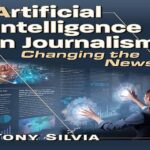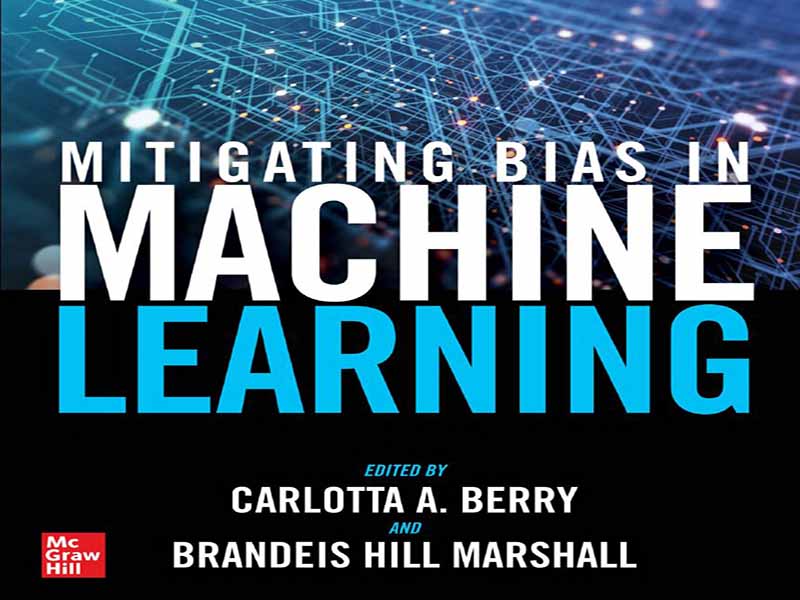- عنوان کتاب: Mitigating Bias in Machine Learning
- نویسنده: Carlotta A. Berry
- حوزه: یادگیری ماشین
- سال انتشار: 2025
- تعداد صفحه: 249
- زبان اصلی: انگلیسی
- نوع فایل: pdf
- حجم فایل: 3.60 مگابایت
ما در دوران قبل از گوگل بزرگ شدیم، جایی که باید به کتابخانه فیزیکی میرفتیم، فهرستهای کتابخانه را بررسی میکردیم و قفسهها را بررسی میکردیم تا شاید اطلاعات مرتبط مورد نیازمان را پیدا کنیم. اگر کتاب آنجا نبود، میتوانستیم از کتابدار بپرسیم که چه زمانی آن را برمیگردانند. گاهی اوقات کتابدار به ما میگفت چه کسی آن را امانت گرفته و ما میتوانستیم دوست/همکلاسیمان را برای قرض گرفتن کتاب اذیت کنیم. حالا به سرعت به جلو میرویم، جایی که زندگی خود را همزمان در دنیای فیزیکی و دیجیتال زندگی میکنیم. اطلاعاتی که قبلاً فقط در کتابها و صحبت با دیگران پیدا میکردیم، اکنون به راحتی در اینترنت در دسترس است. اکنون برای انجام کارهای روزمره مانند خرید مواد غذایی، پرداخت قبوض و ارائه مسیرهای بلادرنگ به این زیرساخت دیجیتال متکی هستیم. با این حال، در حالی که فرصت دسترسی به اطلاعات به طرز چشمگیری گسترش یافته است، کیفیت آن اطلاعات و تأثیر آن بر سایر سیستمها، ابزارها و پلتفرمها – چه در دنیای فیزیکی و چه در دنیای دیجیتال – هنوز در حال ریشه دواندن است. ما با افزایش نظارت دیجیتال در محلههایمان با دوربینهای زنگ در، در مراکز خرید و در تقاطعهای ترافیکی، شاهد تضعیف حریم خصوصی فیزیکی خود بودهایم. ما از احتمال بالاتر طبقهبندی نادرست دیجیتال چهرههای سیاهپوست و قهوهای، که منجر به مجرمسازی نابجای افراد بیگناه شده است، آگاهتر شدهایم. ما به زندگی و یادگیری در محدوده زیرساختهای دیجیتال خود عادت کردهایم و برای برخی از ما، این محدودیتها شدیدتر هستند.
بنابراین، اینجاست که این کتاب، کاهش سوگیری در یادگیری ماشین، وارد عرصه میشود. محتوای آموزشی، بهویژه در علوم طبیعی، متأسفانه تنشها و اصطکاکهای فزاینده ناشی از گسترش فضای دیجیتال ما را نادیده گرفته است. ما تصمیم گرفتیم در منابع آموزشی موجود که بهطور خاص تأثیر همه این محصولات دیجیتال را مورد بحث قرار میدهند و مداخلاتی را برای کاهش اثرات مضر آنها پیشنهاد میدهند، مشارکت کنیم.
هوش مصنوعی (AI)، اصطلاحی که اولین بار در دهه 1950 ابداع شد، در ابتدا توسط جان مککارتی به عنوان “علم و مهندسی هوشمندسازی ماشینها” تعریف شد. تا دهه ۱۹۹۰، توصیف هوش مصنوعی ملموستر شد و در کتاب درسی پایه هوش مصنوعی، هوش مصنوعی: یک رویکرد مدرن، به «طراحی و ساخت عاملهای هوشمندی که ادراکات را از محیط دریافت میکنند و اقداماتی انجام میدهند که بر آن محیط تأثیر میگذارد» تکامل یافت. این تعاریف، که قدمتشان به قبل از اینترنت برمیگردد، توسط اساتید سفیدپوست مرد علوم کامپیوتر در موسسات برتر ایالات متحده تدوین شده بودند. فرض بر این بود که بخش عمدهای از کارهای بنیادی هوش مصنوعی توسط این گروه جمعیتی طراحی و توسعه داده شده است. اما با گسترش اینترنت، شبکههای اجتماعی و برنامهها، هوش مصنوعی از یک مفهوم انتزاعی در یک محیط دانشگاهی به یک عامل تصمیمگیری تبدیل شد که میلیونها نفر را در سراسر جهان تحت تأثیر قرار میدهد.
با پیشرفت توسعه هوش مصنوعی، این توصیف، به عنوان برنامههایی با توانایی یادگیری و استدلال مانند انسانها، موضعی بسیار مرتبطتر و بحثبرانگیزتر را منعکس میکرد. و یک زیرشاخه کلیدی، یادگیری ماشین، برای مشخص کردن محاسبات و بهینهسازیهای پیشرفته مورد نیاز برای تلاشها جهت دستیابی به اهداف یادگیری و استدلال هوش مصنوعی پدیدار شد. اندکی پس از معرفی هوش مصنوعی، یادگیری ماشین (ML) در اواخر دهه 1950 ظهور کرد. رویکردهای ML به عنوان مجموعهای از الگوریتمهای محاسباتی با توانایی یادگیری بدون برنامهریزی مستقیم معرفی میشوند. هدف اصلی ML ثبت یا به خاطر سپردن تمام موقعیتهایی بود که قبلاً دیده بود و در نهایت از برنامهنویس الگوریتم پیشی گرفت.
ما از هوش مصنوعی در سراسر زندگی روزمره خود مانند دادههای مکانی استفاده میکنیم. سیستمهای موقعیتیابی (GPS). امکان پیمایش یک شهر جدید در زمان واقعی با استفاده از سیستمهای هوش مصنوعی که هزاران جاده متصلکننده شهرها و کشورها را بررسی میکنند، امکانپذیر شده است. ما از رویکردهای یادگیری ماشینی در زمینه توصیههای محصول بهرهمند میشویم. میتوانیم راحتتر محصولات مشابه را پیدا کنیم، نظرات آنها را مقایسه و بررسی کنیم و محصولات تکمیلی را به سبد خرید تجارت الکترونیک خود اضافه کنیم.
با این مزایا، فهرست رو به رشدی از مواردی وجود دارد که هوش مصنوعی و یادگیری ماشینی نتایج نادرستی را ارائه دادهاند. یک نمونه غالب از هوش مصنوعی گمراهکننده، شناسایی نادرست افراد سیاهپوست و رنگینپوست در پروندههای جنایی باز است که منجر به بازداشت تاسفبار آنها از ساعتها تا روزها شده است. چندین نفر از این افراد اکنون به دلیل بیعدالتی از اداره پلیس شکایت میکنند. با استفاده از روشهای یادگیری ماشینی، یکی از نتایج بد، محدودیتهای کمتر کارت اعتباری برای زنان آمریکایی و تعداد بیشتر کارتهای اعتباری جمعآوریشده توسط زنان است. وام اعتباری به زنان آمریکایی کمتر از 50 سال قدمت دارد و در قانون فرصتهای اعتباری برابر (ECOA) در سال 1974 تصویب شد. این قانون به زنان آمریکایی حق افتتاح کارتهای اعتباری را اعطا کرد. به نام خودشان. زنان آمریکایی، در کنار نابرابری در پرداخت دستمزد، این محدودیتهای کارت اعتباری پایینتر را دریافت میکنند، بنابراین تمایل دارند کارتهای اعتباری بیشتری نسبت به همتایان مرد خود داشته باشند…
We grew up in the pre-Google times where we needed to go to the physical library, sift through library catalogs, and peruse the stacks in order to hopefully find the relevant information we needed. If the book was not there, then we could ask the librarian when it would be returned. Sometimes the librarian told us who checked it out and we could harass our fellow friend/classmate to borrow the book. Fast-forward to now where we’re living our lives simultaneously in the physical and digital world. The information that we used to find only in books and talking with others is now readily available on the Internet. We now rely on this digital infrastructure to perform everyday tasks like buying groceries, paying bills, and providing us with real-time directions.
However, while the opportunity for access to information has expanded drastically, the quality of that information and its impact on other systems, tools, and platforms—both in our physical and digital worlds—are still being rooted out. We have experienced a dilution of our physical privacy with increased digital surveillance in our neighborhoods with doorbell cameras, in shopping centers, and at traffic intersections. We have become more aware of the higher likelihood of the digital misclassification of Black and Brown faces, which has led to the misplaced criminalization of innocent people. We have become accustomed to living and learning within the limits of our digital infrastructure, and for some of us, these limits are more severe.
So, here is where this book, Mitigating Bias in Machine Learning, enters the landscape. The instructional content, especially in the natural sciences, have unfortunately overlooked the cascading tensions and frictions induced by our expanding digital space. We set out to contribute to the educational resources available that specifically discusses the impact of all these digital products and suggest interventions to lessen their harmful effects.
Artificial intelligence (AI), a term first coined in the 1950s, was originally defined as “the science and engineering of making machines intelligent” by John McCarthy. By the 1990s, artificial intelligence’s description had become more concrete and evolved to “the designing and building of intelligent agents that receive percepts from the environment and take actions that affect that environment” in a foundational AI textbook, Artificial Intelligence: A Modern Approach.” These definitions, predating the Internet, were established by white, male computer science faculty at top-ranked U.S. institutions. The premise was that much of the foundational AI work was designed and developed by this demographic group. But with the proliferation of the Internet, social networks, and apps, AI moved from an abstract concept at an academic setting to being accepted as a decision-making agent affecting millions of people around the world.
As AI development progressed, the description reflected a much more relatable and controversial stance as programs with the ability to learn and reason like people. And a key subdivision, machine learning, emerged to specify the advanced computations and optimizations needed toward attempts to achieve the learning and reasoning goals of AI. Soon after AI was introduced, machine learning (ML) emerged in the late 1950s. ML approaches are heralded as a set of computing algorithms with the ability to learn without being directly programmed. ML’s original goal was to record or remember all the positions it had seen before and ultimately outsmart the algorithm’s programmer.
We use AI throughout our daily lives such as with geospatial positioning systems (GPSs). Being able to navigate a new city in real time is made possible by AI systems ingesting the thousands of roadways connecting cities and countries. We are the beneficiaries of ML approaches when it comes to product recommendations. We can more easily find comparable products, compare and contrast their reviews, and add supplemental products to our e-commerce shopping carts.
With these benefits, there is a growing list of instances where AI and ML produced inaccurate outcomes. A predominant misguided AI example comes in the misidentification of Black and Brown people in open criminal cases, which have led to their unfortunate detainment from hours to days. Several of these individuals are now suing the police department due to the injustice. Using ML methods, one bad outcome is the lower credit card limits for U.S. women and the higher number of credit cards collected by women. Credit lending to U.S. women is less than 50 years old and was decided in the 1974 Equal Credit Opportunity Act (ECOA). It granted U.S. women the right to open credit cards in their own name. Compounded with pay inequity, U.S. women receive these lower credit card limits, so they tend to have more credit
cards than their male counterparts. The historical and socioeconomic contexts that influence computational decisions and outcomes are why we set out to create this book. We wanted to highlight examples of disparities and pinpoint recommendations to reduce the harms generated by computationally based systems. Recently, there have been many cases of bias in AI that have garnered national media attention. For example, chatbots that become racist or bigoted over time, algorithms that convert highly pixelated images to white people, hiring apps that filter out women applicants, facial recognition technology that does not recognize black faces, AI generating all non-Black or non-Brown professor images, or recidivism technology that targets one demographic of perpetrators. All these challenges motivate the need for diverse perspectives in AI such as amplifying the voices of women, Black, Latino, Hispanic, Indigenous, disabled, LGBTQ+, and international scholars. This text has answered the call and will address that need.
این کتاب را میتوانید از لینک زیر بصورت رایگان دانلود کنید:
Download: Mitigating Bias in Machine Learning



































نظرات کاربران